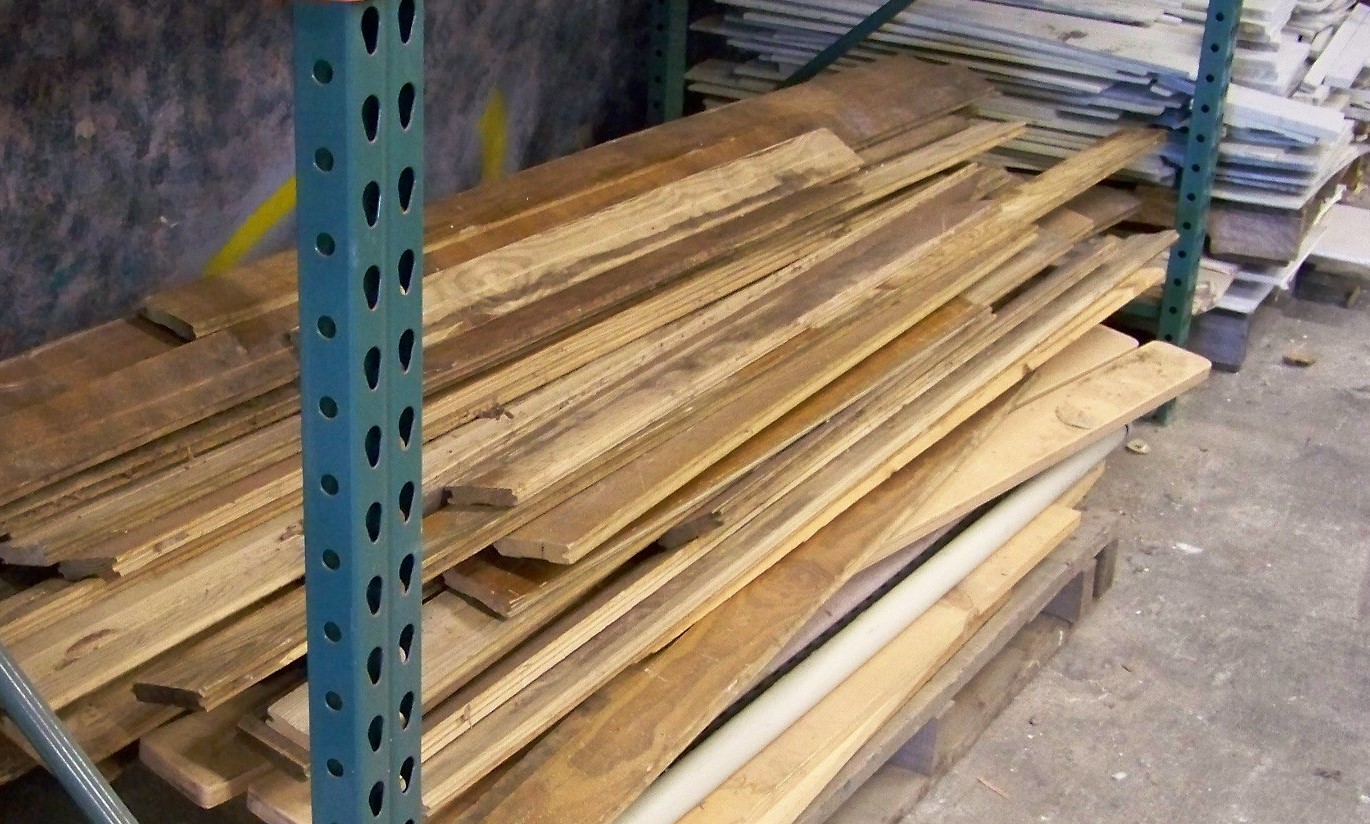Tongue and groove joint
Contents |
[edit] Introduction
An edge-to-edge, tongue and groove joint (also referred to as T&G, tongue & groove, tongue-in-groove or tongued and grooved) is a carpentry term used to describe materials that join together in a specific manner described below.
[edit] Joining technique
The locking mechanism is made with a tongue (male) ridge projection on one edge and a matching groove (female) slot recession on the other edge. The tongue of one piece fits into the groove of the corresponding piece to form a strong, flush joint that may be glued in place if a permanent joint is required.
There are also loose tongue and groove joints. This technique is used on materials that are given grooves on facing edges and joined with a separate (or loose) piece of material that fits between the two and locks them together. Again, glue is often used to secure the joint.
Tongue and groove joints are variations on the mortise and tenon joint, but instead of joining two pieces at a right angle (like a mortise and tenon joint), the tongue and groove connection creates a strong, smooth parallel joint.
[edit] Common applications
This traditional fitting method is often used on natural materials (such as timber or cork), but it can also apply to artificial materials (such as plastic, vinyl or engineered timber). It was once commonly used for flooring and furniture joinery, but other methods have now become widely used.
Tongue and groove treatments can also be used on interior walls such as floor to ceiling timber panels, moulding or wainscoting. Wainscoting is a type of wall panel that is both functional and decorative. It was historically made from timber, but it is now available in other materials. Wainscoting is typically found on the lower portion of an interior wall.
It can also be used as cladding on a building’s exterior surface. The term 'cladding' refers to components that are attached to the primary structure of a building to form non-structural, external surfaces. This is as opposed to buildings in which the external surfaces are formed by structural elements, such as masonry walls, or applied surfaces such as render.
The tongue and groove connection method is the basic concept behind Tongue Larssen interlocking sheets of metal used to create protective retaining walls. These sheet piles can have beneficial driving qualities and provide a strong, close-fitting joint to form an effective water seal because of their uniform section shape. Tongue Larssen sheet piles can be used for water control purposes, such as coastal protection, tide control, flood barriers and so on.
[edit] Advantages and disadvantages
In addition to their smooth appearance and strong bond, tongue and groove joints can be fairly easy to fabricate and instal without causing damage to the edges when they are fitted together. For flooring installations, the tongue and groove technique is suitable for floating floors and is commonly incorporated into click and lock flooring installations. However, unlike basic tongue and groove flooring, click lock flooring joins at the interlocking edge and then gets snapped into place through the application of firm, downward pressure.
In any type of installation, tongue and groove joints can be difficult to disassemble or repair once the glue has set between the panels.
[edit] Related articles on Designing Buildings
Featured articles and news
The UK's Modern Industrial Strategy: A 10 year plan
Previous consultation criticism, current key elements and general support with some persisting reservations.
Building Safety Regulator reforms
New roles, new staff and a new fast track service pave the way for a single construction regulator.
Architectural Technologist CPDs and Communications
CIAT CPD… and how you can do it!
Cooling centres and cool spaces
Managing extreme heat in cities by directing the public to places for heat stress relief and water sources.
Winter gardens: A brief history and warm variations
Extending the season with glass in different forms and terms.
Restoring Great Yarmouth's Winter Gardens
Transforming one of the least sustainable constructions imaginable.
Construction Skills Mission Board launch sector drive
Newly formed government and industry collaboration set strategy for recruiting an additional 100,000 construction workers a year.
New Architects Code comes into effect in September 2025
ARB Architects Code of Conduct and Practice available with ongoing consultation regarding guidance.
Welsh Skills Body (Medr) launches ambitious plan
The new skills body brings together funding and regulation of tertiary education and research for the devolved nation.
Paul Gandy FCIOB announced as next CIOB President
Former Tilbury Douglas CEO takes helm.
UK Infrastructure: A 10 Year Strategy. In brief with reactions
With the National Infrastructure and Service Transformation Authority (NISTA).
Ebenezer Howard: inventor of the garden city. Book review.
The Grenfell Tower fire, eight years on
A time to pause and reflect as Dubai tower block fire reported just before anniversary.
Airtightness Topic Guide BSRIA TG 27/2025
Explaining the basics of airtightness, what it is, why it's important, when it's required and how it's carried out.
Construction contract awards hit lowest point of 2025
Plummeting for second consecutive month, intensifying concerns for housing and infrastructure goals.
Understanding Mental Health in the Built Environment 2025
Examining the state of mental health in construction, shedding light on levels of stress, anxiety and depression.






















